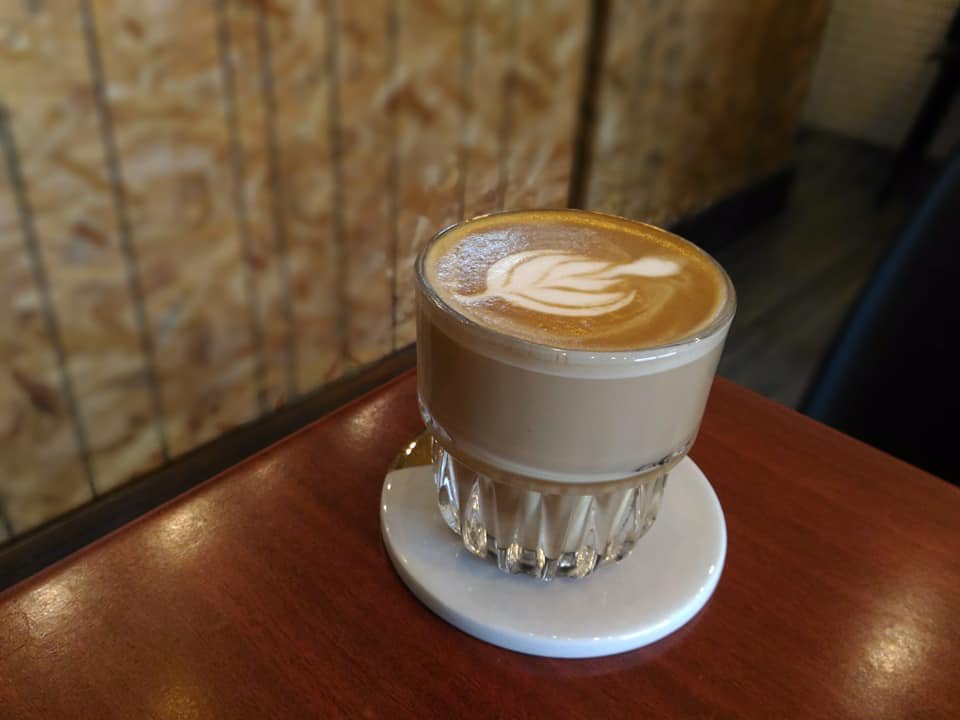How To Make Authentic Cuban Coffee? Step-By-Step Guide
Coffee Queries is reader-supported. When you buy through links on our website, we may earn an affiliate commission. Learn More
Cuban coffee holds a special place beyond being just a drink; it reflects a lifestyle. Among Cubans, enjoying coffee daily is a tradition that strengthens bonds with family, friends, and their roots. This coffee is celebrated for its profound, sweet flavor which is marked by a unique layer of foam called espuma or crema.
Whether you enjoy a strong espresso shot (cafecito), a milky latte (café con leche), or something in between (cortadito), Cuban coffee gives you a burst of flavor and energy that transports you to Havana. Within this guide, we’ll teach you how to make genuine Cuban coffee at home using simple ingredients and tools.

Related Read: Why Is Cuban Coffee So Strong? – Let’s Find Out
How To Make Cuban Coffee?
Preparing Cuban coffee at home isn’t complex, but it calls for careful planning. While the traditional approach involves a moka pot or stovetop espresso maker, you can improvise with alternative coffee makers when needed.
Ingredients
Before delving into both recipes, let’s first consider the essential items you’ll require:
- Ground Coffee.
- White or raw sugar.
Note: We highly recommend using these traditional ingredients for an authentic Cuban coffee experience: dark, Cuban-style roasted coffee beans and raw demerara sugar. Bustelo, Pilon, or La Llave are a few of the varieties you can choose from. You can also read our guide on the strongest types of coffee for a better idea.
Also, you will require an Espresso machine or moka pot (stovetop espresso maker).
How to Make Cuban Coffee with a Moka Pot?
Brewing Cuban coffee using a moka pot is a traditional and authentic method to enjoy this delectable and robust beverage. The moka pot is a stovetop device that brews coffee by passing boiling water through finely ground coffee beans. Here are the steps to make Cuban coffee directly in a moka pot:

Step 1: Preparing Your Moka Pot
Place the sugar directly alongside the coffee grounds in your moka pot. This approach yields a gentler espumita (foam) but offers convenience and the potential for slight sugar caramelization when you’re in a hurry. For a moderately sweet taste, incorporate 1–2 teaspoons (5–10 ml) of sugar per espresso-sized coffee serving. If you desire an intensely sweet flavor, go for 1–1½ tablespoons (15–22 ml).
Step 2: Grounds Preparation
It’s crucial to refrain from compacting the coffee grounds, particularly when using an aluminum moka pot. Excessive pressure while packing can impede the steam flow, which may lead to an irregular extraction process. In extreme cases, it could even lead to the lid of your moka pot being forcefully ejected.
Step 3: Preheated Water Addition
Gently pour water into the bottom chamber of the moka pot. It’s advisable to utilize preheated water, as it aids in expediting the moka pot’s ascent to the optimal brewing temperature. Next, fill the water up to the point aligned with the safety valve indicator.
Step 4: Brew it Until Moka Pot Gurgles
Proceed with the brewing process in the typical manner. Assemble the various components of your moka pot and apply gentle heat at a medium-low setting. When the moka pot begins to bubble, your coffee is ready.
Suggested Reading: How to Flavor Coffee? – 7 Extras You Can Add to Your Coffee
How to Make Cuban Coffee with a Sugary Foam?
With these step-by-step instructions, let’s uncover the alternative method of preparing Cuban coffee.

.
Step 1: Select your Coffee Beans
Cuban-style coffee can be quite potent and aromatic, as it’s typically brewed with robust Arabica beans commonly associated with brands such as Bustelo, Pilon, and La Llave. When grinding beans for a traditional moka pot, you should aim for a slightly coarser powder (not as finely ground as you would for espresso).
Step 2: Preparing the Moka Pot with Coffee and Water
Usually, Cubans prepare cafecito employing a stovetop Moka pot, resulting in a deep, flavorful infusion similar to espresso. Here’s the method: Fill the Moka pot’s basket with coffee and level it with your finger, but avoid pressing it down. Now, add water to the lower pot and ensure that it reaches the safety valve.
Handy Tip: You can also use an espresso machine. In a hurry, you can use any other coffee maker, but keep in mind that the outcome won’t match the intensity of the traditional Cuban approach.
Try preheating the water in a kettle until it’s just below boiling. This speeds up the coffee extraction process and prevents the coffee grounds from getting too hot.
Step 4: Warming Up on Medium-Low Heat
Assemble the components of the moka pot and then position it on a stove burner set to medium-low heat. Keep the lid slightly open so you can observe what’s happening inside.
Step 5: Balancing Sweetness
The secret to Cuban coffee lies in the frothy concoction of sugar and coffee known as espuma or espumita. Typically in traditional Cuban homes, it’s customary to utilize approximately 1 to 1½ tablespoons (15–22 mL) of sugar for each espresso shot, equal to filling one demitasse cup.
However, some people prefer a slightly less sweet taste as mentioned in section (1–2 teaspoons of sugar). Raw sugar maintains its traditional status while granulated white sugar proves equally effective. Therefore, if you don’t have raw sugar, you can use white sugar as a suitable alternative.
Step 6: Coffee-Sugar Fusion
Once your moka pot dispenses sufficient coffee to blanket the bottom, gently pour just the right amount over the sugar to dampen it. This step should be done promptly, so keep your moka pot within view. It’s wiser to include a modest amount of coffee than an excessive one.
Step 7: Whipping Up Coffee-Sugar
Use a metal spoon to mix the coffee and sugar vigorously for about two to three minutes. It will start as a dry, dark paste and gradually turn into a lighter caramel color with a bit of foam as you incorporate air into it.
Step 8: Crafting the Perfect Cuban Cup
Once your coffee is ready, gently pour it over the sugar paste and stir until a delightful brown foam. Gently pour the coffee into espresso cups, being mindful not to disturb the espumita. If you’d like, spoon the foam directly onto each cup to make sure everyone can savor its sweetness.
Editor’s Pick: How to Chill Coffee Fast? 10 Tested Ways.
Different Types of Cuban Coffee Have Different Recipes
Each of these recipes brings its own flair to the art of making Cuban coffee. Let’s dive into the variations in ingredients and the steps that set them apart:
Cafecito

Cafecito keeps things incredibly straightforward. Gather coffee beans, water, sugar, and your trusty moka pot. The essential method is to combine sugar with the initial strong espresso vigorously drops to achieve a sumptuous, velvety foam. Following that, pour the leftover espresso onto the sweetened mixture and give it a thorough stir.
Cafe con leche

In this Cuban coffee variant, you incorporate milk into the cafecito, which gives it a creamier and milder flavor. The key step involves warming up milk either on the stove or in the microwave until it’s hot but not boiling. Next, pour some cafecito into a sizable cup and top it off with the steaming milk. You have the flexibility to tweak the coffee-to-milk ratio to match your preferences.
Cortadito

This recipe closely resembles cafe con leche but with a reduced milk content. The key distinction lies in employing a smaller cup and less milk to create a more potent coffee. Typically, the coffee-to-milk ratio stands at 1:1 or 2:1, varying based on your preferred coffee strength. Additionally, a notable divergence is the inclusion of steamed milk in the cortadito.
Read Next: Why Is Coffee Called Java?
Conclusion
Cuban coffee, cherished for its rich flavor and frothy foam, embodies a cultural tradition. Brewing it at home is a delightful and straightforward process, whether using a moka pot or alternative coffee makers. With just coffee, sugar, and water, you can savor the essence of Cuban coffee and transport yourself to the heart of Havana, all from the comfort of your kitchen.
FAQs
What is Cuban coffee, and what makes it unique?
Cuban coffee is a strong, flavorful coffee known for its sweetness and frothy foam called "espuma." What makes it unique is the combination of dark roasted coffee beans, sugar, and a brewing method that creates a concentrated, aromatic espresso-like brew.
What is the traditional method of brewing Cuban coffee?
The traditional method involves using a moka pot (stovetop espresso maker). Ground coffee and sugar are placed in the moka pot's filter basket, and hot water is added to the bottom chamber. As it brews, the coffee is mixed with sugar to create espuma.
Can I make Cuban coffee without a moka pot?
While a moka pot is traditional, you can make Cuban coffee using alternative coffee makers like an espresso machine. However, the authentic flavor and foam may vary.
What type of coffee beans are typically used for Cuban coffee?
Cuban-style coffee is often made using dark-roasted Arabica beans, such as brands like Bustelo, Pilon, or La Llave. The beans are ground to a slightly coarser powder than espresso to achieve the desired flavor and strength.






